Instruction
Hit your irons better with these two simple drills
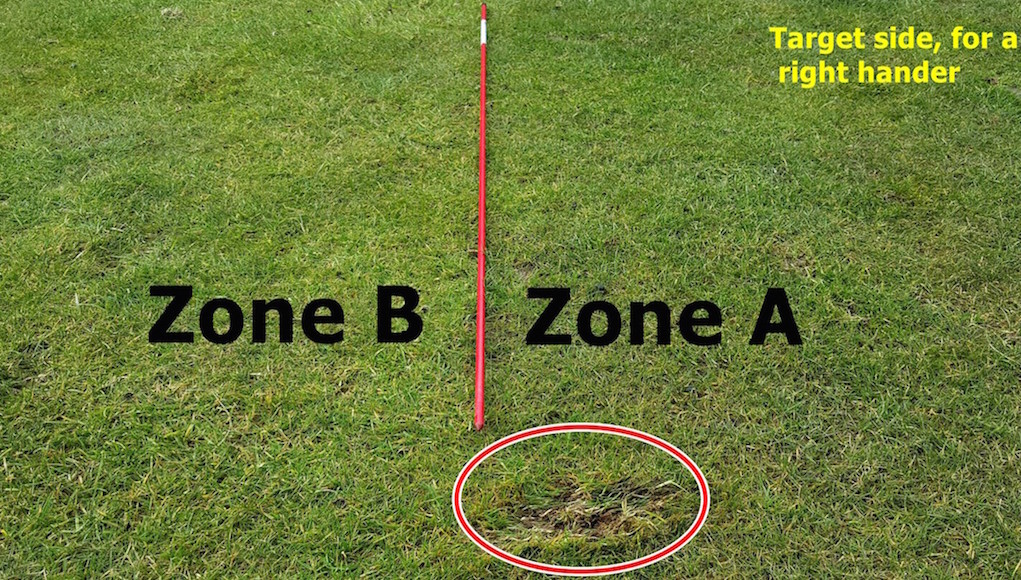
“I’d like to hit my irons better.” That’s one of the most popular requests when students come for a lesson, so I decided to write an article about it for GolfWRX readers.
Luckily, there are two very simple drills that can help you achieve a more consistent and better quality strike. But before we continue, it’s important to understand one fundamental idea about quality ball striking with your irons. All good ball strikers, with no exception, will consistently produce a negative angle of attack when striking an iron off the ground.
Trackman defines angle of attack as “The up or down movement of the club head at the time of maximum compression.”
Simply, angle of attack (AoA) refers to whether the club head is ascending (moving up) or descending (moving down) into the golf ball. As a general rule, an AoA between -1 and -4 should be targeted with iron shots; this means that the club head will be moving on a line between 1 and 4 degrees downward when striking the ball
Low Point
An easy way to visualize a negative angle of attack is to take a look at the pictures below, provided very kindly by a friend of mine, Adam Young.
In this first picture, the lowest point of the swing (low point), marked by the black line, is positioned ahead, or target side of the ball. This naturally allows the club head to move downwards into the ball.
This second picture shows what most amateur golfers struggle with: a low point behind the ball. In both Swing A and Swing B in the second picture, the low point is positioned behind the ball. And when this happens, you will encounter problems with your irons.
- If you are lucky, you may just skim the ground (Swing A) at the low point and in fact still get some amount of club on the ball, often just catching the bottom 2 grooves and hurting your fingers on a cold morning. With this pattern, however, it is also likely that you will hit a lot of thins and tops, as your club moves “up” into the ball.
- If you aren’t so lucky and your swing arc is only a touch lower (Swing B), your club will hit the ground at the red star, resulting in big divots before the ball.
Now, from a technical prospective, I believe there are two main issues that often cause this striking problem. The first is when there is an “early release” or “casting” of the club from the top of the backswing. This happens when the angle between the lead arm and the shaft is lost too EARLY. Secondly, and the biggest issue for many club golfers, is when the body mass is too far back at impact, as players “get caught” on the trail, or back foot. This often happens when players go with their instincts and lean back while trying to lift the ball into the air. As a result, the positioning of the upper body at impact is poor and as with the first issue, it makes it very difficult to achieve a low point ahead of the ball.
So how can golfers combat these two issues?
Towel Drill
In this drill, place a thin towel about 6 inches behind the ball. Then, attempt to hit the golf ball while missing the towel. A good positioning of the towel will make it very difficult to not move the low point ahead of the ball, as a low point too far behind the ball will only result in hitting the towel.
Please Note: I recommend a thin towel, as opposed very thick towel, which will encourage you to “chop” steeply onto the ball. Remember, a subtle angle of attack of around -1 degrees (down) is often ideal. Golfers do not want to go digging and get the club head moving down -10 degrees!
Alignment stick drill
In this exercise, if you are fortunate enough to practice from short-cut grass, place an alignment stick as shown. Then, take your normal setup position with the club resting at the end of the stick. From there, make some swings and look to make some marks on the grass in Zone A. By this, I mean bruise or brush — maybe even take a shallow divot — but don’t go making big craters!
Any marks in Zone B mean that the low point occurred behind the ball, instead of ahead. Once satisfied that you can make some marks in Zone A consistently, have a go with a ball while attempting to replicate a similar swing movement.
Note: If you cannot access a grass driving range, use this same drill on a mat but instead of trying to mark the mat, place a small tee peg in Zone A. Then, try to hit the tee peg cleanly to again ensure that the low point is ahead of the ball.
Can it be really be that simple?
You will hopefully notice that the drills given involve ZERO technical information regarding positions or movements. Instead, they use something called a “task constraint.”
A TASK CONSTRAINT IS A BOUNDARY THAT ENCOURAGES THE LEARNER TO EMERGE WITH CERTAIN BEHAVIORS.
In simple terms, the constraint of the towel and alignment stick will allow your technique to evolve from the exercise, as opposed to deliberately thinking about it. For example, you will seriously struggle to miss the towel if you “release early” or “get stuck” on your trail side. The real beauty of this type of exercise is that you can often make the movement change without getting caught up in a barrage of swing thoughts. Ironically, it is excessive “attention” on your swing that will often result in bad shots.
Unfortunately, your friends on a Saturday morning may not allow you to use a towel in the weekly medal. With this in mind, do not become too reliant on the drills and vary up the usage in your practice sessions. Make sure to let go of your technical thoughts, and you’ll be amazed how quickly new, better habits can be formed.
- LIKE333
- LEGIT41
- WOW14
- LOL9
- IDHT5
- FLOP6
- OB3
- SHANK22
Instruction
The Wedge Guy: The easiest-to-learn golf basic

My golf learning began with this simple fact – if you don’t have a fundamentally sound hold on the golf club, it is practically impossible for your body to execute a fundamentally sound golf swing. I’m still a big believer that the golf swing is much easier to execute if you begin with the proper hold on the club.
As you might imagine, I come into contact with hundreds of golfers of all skill levels. And it is very rare to see a good player with a bad hold on the golf club. There are some exceptions, for sure, but they are very few and very far between, and they typically have beat so many balls with their poor grip that they’ve found a way to work around it.
The reality of biophysics is that the body moves only in certain ways – and the particulars of the way you hold the golf club can totally prevent a sound swing motion that allows the club to release properly through the impact zone. The wonderful thing is that anyone can learn how to put a fundamentally sound hold on the golf club, and you can practice it anywhere your hands are not otherwise engaged, like watching TV or just sitting and relaxing.
Whether you prefer an overlap, interlock or full-finger (not baseball!) grip on the club, the same fundamentals apply. Here are the major grip faults I see most often, in the order of the frequency:
Mis-aligned hands
By this I mean that the palms of the two hands are not parallel to each other. Too many golfers have a weak left hand and strong right, or vice versa. The easiest way to learn how to hold the club with your palms aligned properly is to grip a plain wooden ruler or yardstick. It forces the hands to align properly and shows you how that feels. If you grip and re-grip a yardstick several times, then grip a club, you’ll see that the learning curve is almost immediate.
The position of the grip in the upper/left hand
I also observe many golfers who have the butt of the grip too far into the heel pad of the upper hand (the left hand for right-handed players). It’s amazing how much easier it is to release the club through the ball if even 1/4-1/2″ of the butt is beyond the left heel pad. Try this yourself to see what I mean. Swing the club freely with just your left hand and notice the difference in its release from when you hold it at the end of the grip, versus gripping down even a half inch.
To help you really understand how this works, go to the range and hit shots with your five-iron gripped down a full inch to make the club the same length as your seven-iron. You will probably see an amazing shot shape difference, and likely not see as much distance loss as you would expect.
Too much lower (right) hand on the club
It seems like almost all golfers of 8-10 handicap or higher have the club too far into the palm of the lower hand, because that feels “good” if you are trying to control the path of the clubhead to the ball. But the golf swing is not an effort to hit at the ball – it is a swing of the club. The proper hold on the club has the grip underneath the pad at the base of the fingers. This will likely feel “weak” to you — like you cannot control the club like that. EXACTLY. You should not be trying to control the club with your lower/master hand.
Gripping too tightly
Nearly all golfers hold the club too tightly, which tenses up the forearms and prevents a proper release of the club through impact. In order for the club to move back and through properly, you must feel that the club is controlled by the last three fingers of the upper hand, and the middle two fingers of the lower hand. If you engage your thumbs and forefingers in “holding” the club, the result will almost always be a grip that is too tight. Try this for yourself. Hold the club in your upper hand only, and squeeze firmly with just the last three fingers, with the forefinger and thumb off the club entirely. You have good control, but your forearms are not tense. Then begin to squeeze down with your thumb and forefinger and observe the tensing of the entire forearm. This is the way we are made, so the key to preventing tenseness in the arms is to hold the club very lightly with the “pinchers” — the thumbs and forefingers.
So, those are what I believe are the four fundamentals of a good grip. Anyone can learn them in their home or office very quickly. There is no easier way to improve your ball striking consistency and add distance than giving more attention to the way you hold the golf club.
More from the Wedge Guy
- The Wedge Guy: Golf mastery begins with your wedge game
- The Wedge Guy: Why golf is 20 times harder than brain surgery
- The Wedge Guy: Musings on the golf ball rollback
- LIKE83
- LEGIT13
- WOW5
- LOL1
- IDHT0
- FLOP4
- OB1
- SHANK8
Instruction
Clement: Stop ripping off your swing with this drill!

Not the dreaded headcover under the armpit drill! As if your body is defective and can’t function by itself! Have you seen how incredible the human machine is with all the incredible feats of agility all kinds of athletes are accomplishing? You think your body is so defective (the good Lord is laughing his head off at you) that it needs a headcover tucked under the armpit so you can swing like T-Rex?
- LIKE0
- LEGIT2
- WOW2
- LOL0
- IDHT0
- FLOP0
- OB0
- SHANK2
Instruction
How a towel can fix your golf swing

This is a classic drill that has been used for decades. However, the world of marketed training aids has grown so much during that time that this simple practice has been virtually forgotten. Because why teach people how to play golf using everyday items when you can create and sell a product that reinforces the same thing? Nevertheless, I am here to give you helpful advice without running to the nearest Edwin Watts or adding something to your Amazon cart.
For the “scoring clubs,” having a solid connection between the arms and body during the swing, especially through impact, is paramount to creating long-lasting consistency. And keeping that connection throughout the swing helps rotate the shoulders more to generate more power to help you hit it farther. So, how does this drill work, and what will your game benefit from it? Well, let’s get into it.
Setup
You can use this for basic chip shots up to complete swings. I use this with every club in my bag, up to a 9 or 8-iron. It’s natural to create incrementally more separation between the arms and body as you progress up the set. So doing this with a high iron or a wood is not recommended.
While you set up to hit a ball, simply tuck the towel underneath both armpits. The length of the towel will determine how tight it will be across your chest but don’t make it so loose that it gets in the way of your vision. After both sides are tucked, make some focused swings, keeping both arms firmly connected to the body during the backswing and follow through. (Note: It’s normal to lose connection on your lead arm during your finishing pose.) When you’re ready, put a ball in the way of those swings and get to work.

Get a Better Shoulder Turn
Many of us struggle to have proper shoulder rotation in our golf swing, especially during long layoffs. Making a swing that is all arms and no shoulders is a surefire way to have less control with wedges and less distance with full swings. Notice how I can get in a similar-looking position in both 60° wedge photos. However, one is weak and uncontrollable, while the other is strong and connected. One allows me to use my larger muscles to create my swing, and one doesn’t. The follow-through is another critical point where having a good connection, as well as solid shoulder rotation, is a must. This drill is great for those who tend to have a “chicken wing” form in their lead arm, which happens when it becomes separated from the body through impact.
In full swings, getting your shoulders to rotate in your golf swing is a great way to reinforce proper weight distribution. If your swing is all arms, it’s much harder to get your weight to naturally shift to the inside part of your trail foot in the backswing. Sure, you could make the mistake of “sliding” to get weight on your back foot, but that doesn’t fix the issue. You must turn into your trial leg to generate power. Additionally, look at the difference in separation between my hands and my head in the 8-iron examples. The green picture has more separation and has my hands lower. This will help me lessen my angle of attack and make it easier to hit the inside part of the golf ball, rather than the over-the-top move that the other picture produces.


Stay Better Connected in the Backswing
When you don’t keep everything in your upper body working as one, getting to a good spot at the top of your swing is very hard to do. It would take impeccable timing along with great hand-eye coordination to hit quality shots with any sort of regularity if the arms are working separately from the body.
Notice in the red pictures of both my 60-degree wedge and 8-iron how high my hands are and the fact you can clearly see my shoulder through the gap in my arms. That has happened because the right arm, just above my elbow, has become totally disconnected from my body. That separation causes me to lift my hands as well as lose some of the extension in my left arm. This has been corrected in the green pictures by using this drill to reinforce that connection. It will also make you focus on keeping the lead arm close to your body as well. Because the moment either one loses that relationship, the towel falls.


Conclusion
I have been diligent this year in finding a few drills that target some of the issues that plague my golf game; either by simply forgetting fundamental things or by coming to terms with the faults that have bitten me my whole career. I have found that having a few drills to fall back on to reinforce certain feelings helps me find my game a little easier, and the “towel drill” is most definitely one of them.
- LIKE12
- LEGIT2
- WOW2
- LOL0
- IDHT0
- FLOP2
- OB0
- SHANK8
-

 19th Hole3 weeks ago
19th Hole3 weeks agoJohn Daly stuns fans into silence with brutal opening tee shot on PGA Tour Champions
-

 19th Hole2 days ago
19th Hole2 days agoDave Portnoy places monstrous outright bet for the 2024 Masters
-

 19th Hole2 weeks ago
19th Hole2 weeks agoThings got heated at the Houston Open between Tony Finau and Alejandro Tosti. Here’s why
-

 19th Hole3 days ago
19th Hole3 days agoTiger Woods arrives at 2024 Masters equipped with a putter that may surprise you
-

 19th Hole1 week ago
19th Hole1 week agoReport: Tiger Woods has ‘eliminated sex’ in preparation for the 2024 Masters
-

 19th Hole3 weeks ago
19th Hole3 weeks agoCharlie Woods finds it tough going on American Junior Golf Association debut
-

 19th Hole1 week ago
19th Hole1 week agoAddiction, spinal fusion, and scam artists – Everything Anthony Kim revealed in candid interview with David Feherty
-

 19th Hole7 days ago
19th Hole7 days agoAnthony Kim says doctors told him that he ‘may not have much time left’ ahead of LIV return

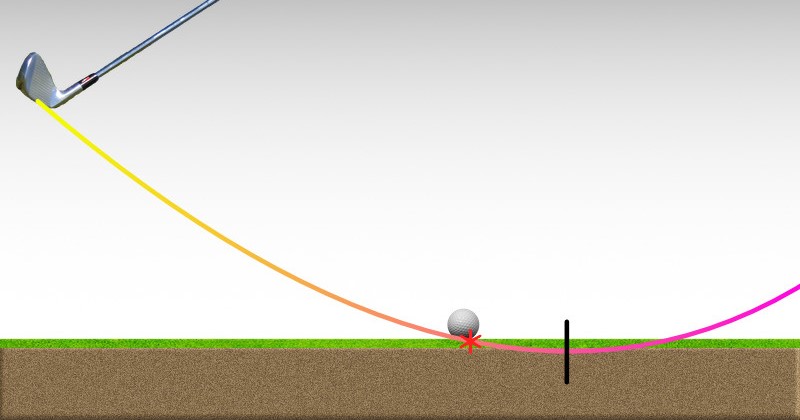
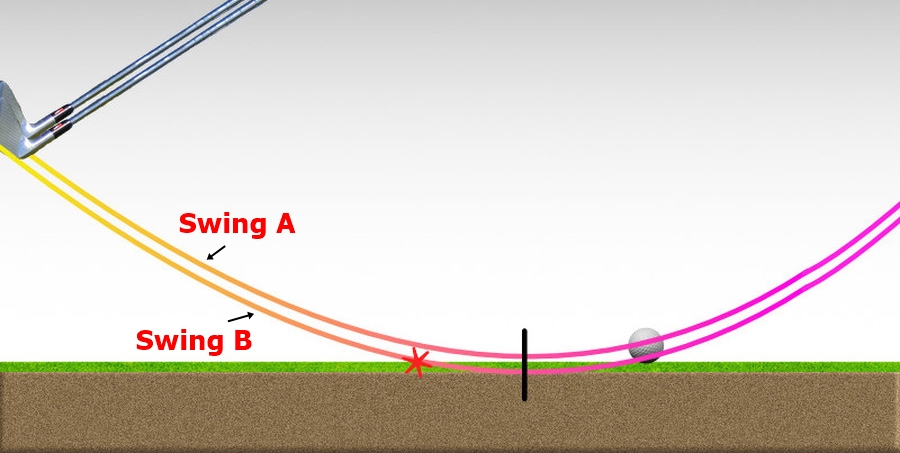
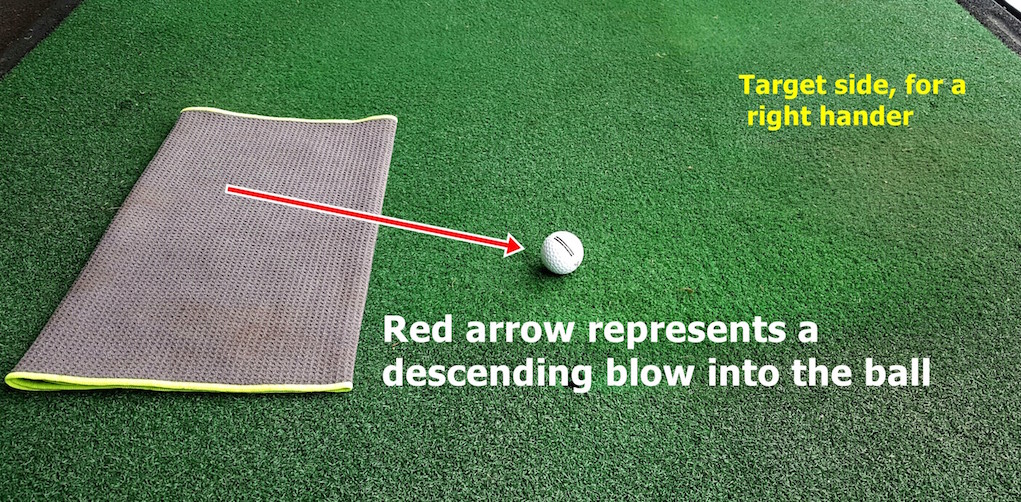
















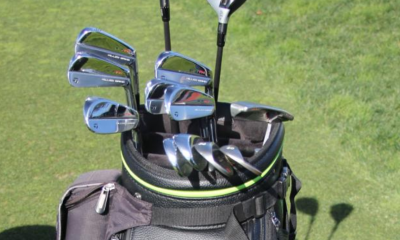

Pingback: Master Your Golf Swing: Perfect Angle of Attack – Linked Greens
Pingback: Hitting The Golf Ball Too Low With Your Irons? Here’s How To Hit It Higher - (MUST READ Before You Buy)
Steven
Apr 27, 2016 at 1:27 pm
Great Advice Thomas. I know one of the things I am working on right now is improving impact position. Anything to help get the divot on the correct side of the ball will help me.
I also think this article illustrates an important point in instruction. Instructors know the end results (well balanced swing, etc.), but many of them will get there a different way. I like this drill because it helps me visualize where to hit the ground. The added benefit is my weight shift and lag should improve. Others may teach it a different way, but I personally like this one.
Dave T
Apr 26, 2016 at 7:40 am
Whatever you do don’t mix up these two drills! I was doing the ‘towel” drill but using an alignment stick instead. After each successive shot I kept moving the stick closer and closer to the ball. BAM! I hit the stick and helicoptered it out into the range! Talk about walk of shame going out to retrieve it. Oh, and if you hit driveway markers hard enough they will break!
Steve
Apr 26, 2016 at 6:14 am
One of the better instructional articles I’ve read in a while. Nice job.
Brad
Apr 25, 2016 at 2:23 pm
Love it! I used to lay a tee against the backside of the ball and think about hitting the tee instead of the ball…think I’m going to try the towel drill after work
Michael
Apr 25, 2016 at 1:29 pm
So with the alignment stick drill, I assume that the golfer straddles the alignment stick.
TheCityGame
Apr 26, 2016 at 11:42 am
that’s how he diagrammed it, but there’s no reason not to put the alignment stick on the other side so you don’t need to straddle it. Or a tee. No need for a alignment stick. Just want a visual cue for where you place the ball to make sure you’re taking a divot in the right spot.
Mike
Apr 25, 2016 at 1:03 pm
My instructor would have a pocketful of dimes and place one an inch or two in front of the ball. The goal was to swing through and clip the dime, with the ball just getting in the way. It helped me, as I would be guilty of leaning back ever so slightly to add loft on a shallow swing.
parker
Apr 23, 2016 at 8:44 pm
I think this is the single most important drill anyone can do (towel drill vs alignment stick drill… its really the same thing). The technical points of a golf swing lose their impact if you can’t get your club on the ball properly.
To add my two cents, I recommend spending time on this drill before working on a new swing move, to make sure you are indeed starting with a solid strike, and then doing it again after working on the new move, to make sure you don’t take a step backwards in your striking.
The other good thing about this drill is that it provides real feedback and ignores whatever you feel. I use CB irons and I swing very hard, and I find that slightly fat or thin shots still feel solid, but come up a little short. If my clubs are going short on the range, I’ve learned to check this drill first before trying to mess with my swing. For me, it’s usually a simple posture and balance issue that messes up my low point, instead of something more mechanical.